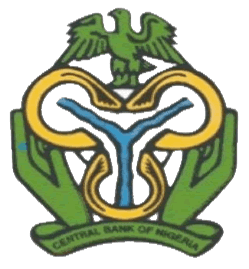Refinancing and Rediscounting Scheme (RRF)
Development Financing | Activities | Agric Credit | Commodity Surveillance | Microfinance | SMEEIS | Refinancing & Rediscounting Scheme | Infrastructure Finance | Newsletter | Microfinance Advisory Board | Financial Inclusion | Financial Literacy | Youth Entrepreneurship Development Programme
Introduction
Banks in Nigeria have continued to provide mainly short-term loans for trading and service activities based on their mobilization of short-term funds. Medium and long-term lending is very low and this has continued to hamper the development of the real sectors of the economy. The refinancing facility of the CBN is a special window with effect from January, 2002 for banks that are willing to advance loans for medium and long-term investments in agriculture, semi-manufacturing and manufacturing. Eligible projects under the Scheme are those with a tenor of 5 years and above.
The refinancing facility is concessionary and the rate is 2% points below the Minimum Rediscounting Rate (MRR). The window applies to facilities that must have been held for not less than one year and enables banks to access funds up to 60% of qualifying loans.
The discount window resolves two problems. It provides alternative sources of funds for lending by banks and it offers additional potential for increased business activities and profit earning. To farmers, it offer concessionary interest rate on term loans for agricultural investments and afford them to conveniently repay the loans as well as to make profits. However, it may induce too much capital-intensive production.
The RRF guideline is currently being reviewed to make it easier for banks to take advantage.
Emergence/Establishment
Origin
Given the weak growth performance of the economy over the past decade, the
CBN sought to encourage medium to long-term bank lending to the productive
sectors of the economy in order to expand and diversify its production base.
However, a critical examination of the tenor structure of deposit money banks� lending to the domestic economy showed that the bulk of aggregate credit was short-term, about 12 months. Such loans were channeled mainly to general commerce and trade. This has resulted in the stunted growth of the real sector.
It was, therefore, deemed imperative to provide some incentives to encourage medium to long term lending to the real sectors in order to diversify and expand the productive base of the Nigerian economy.
The Facility
In order to reverse the undesirable trend of credit flow stated above, the
CBN introduced the RRF to all
deposit money
banks in Nigeria through its circular (BOD/D/ABJ/RRF/2002)
of May 2002. The RRF was developed to serve as an incentive for attracting loans
to medium to long gestation real sector projects. It is a window and an
incentive meant to provide temporary relief to deposit money banks which may
face liquidity problems as a result of committing their resources to medium to
long-term funding of real sector activities.
Strategic Objectives of RRF
The strategic Objectives of the RRF include the following:
- To encourage medium and long term bank lending to the productive sectors of the economy in order to expand and diversify the nation�s production base.
- To reverse the trend where short-term credits to general commerce and trade dominates domestic lending.
- To deliberately encourage a high ratio of aggregate (medium and long term) credits to the real sector for growth and development.
Key Features of RRF
The Promissory Note (the refinancing instrument) is issued in favour of the
CBN by the participating bank applying for the facility. The Promissory Note is
an eligible instrument at
the CBN
Discount Window.
Conditions for Accessing the CBN RRF
The conditions guiding access are as follows:
- The banks can access up to only sixty percent (60%) of the qualifying credit facilities.
- The loan portfolio for which the facility is required must have been held for not less than one year, and must have an original tenor of not less than five (5) years.
- Access to the facility is once in twelve (12) calendar months.
- Once the prescribed conditions for the issuance of the Promissory Note are met, the note is issued and presented to the Discount Office, Central Bank of Nigeria. Upon discounting, the proceeds of the Promissory Notes are credited to the current account of the participating bank at the CBN, under advice.
Applicable Interest Rate
The Notes are rediscountable at the CBN Discount window at a rate that is
two percentage points below the prevailing
Minimum
Rediscount Rate (MRR).
The Specified Sub-sectors Covered Under the RRF.
The RRF window is available to any deposit money bank that has provided
medium to long term credit facilities for any of the following activities:
- Agricultural production.
- Manufacturing.
- Semi manufacturing.
- Exploration and exploitation of solid minerals, and
- Information Technology (IT).
Current Status of RRF.
An evaluation of the RRF program since its inception in year 2002 has
revealed that out of the 89 banks operating in the country then, only four (4)
banks sent in applications amounting to N818.59 million. Two of
the four applications were approved for refinancing. One out of the two approved
applications was accompanied with a Promissory Note for N49.2
million for refinancing. The two other applications that were unsuccessful did
not meet the conditions stipulated in the guidelines. As such, only one bank has
so far been successful in accessing funds from the RRF window. This is an
indication that the incentives provided by the RRF were not sufficiently
attractive to the banks. As a result the scheme is being reviewed to boost its
attraction.
Click here to see frequently asked questions on Development Finance

 Flickr
Flickr Instagram
Instagram LinkedIn
LinkedIn